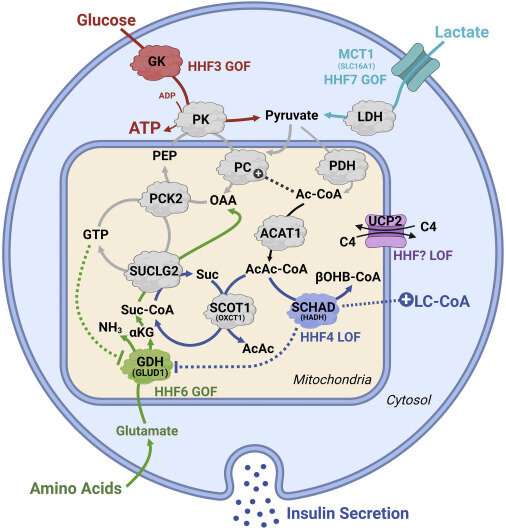
While it has been more than 100 years since the discovery of insulin, metabolic diseases like diabetes, obesity and fatty liver continue to impact most of the population. More than one-third (36.5 percent) of adults in the U.S. have obesity while another 32.5 percent of American adults are overweight. In all, more than two-thirds of adults in the United States are overweight or have obesity.
Metabolic syndrome is a cluster of conditions that occur together, increasing one’s risk of heart disease, stroke and type 2 diabetes. These conditions include increased blood pressure, high blood sugar, excess body fat around the waist and abnormal cholesterol or triglyceride levels. Despite extensive study and experimentation, researchers have not yet figured out how to prevent or reverse these conditions.
Now a group of researchers from Boston University School of Medicine (BUSM), the University of Wisconsin, Yale School of Medicine and the University of Montreal have devised a new testable model that may lead to better understanding and treating metabolic diseases.
“Progress requires models that can inform our understanding. The current models are inadequate and therefore not likely to help solve this important problem. A revised model is needed,” says co-corresponding author Barbara E. Corkey, Ph.D., professor emeritus of medicine and biochemistry at BUSM.
In this review article, the researchers integrate many new aspects of cell metabolic signal transduction (the process by which a cell responds to substances outside the cell through signaling molecules found on the surface of and inside the cell) that has previously not been covered with new knowledge in the field. From this analysis, the researchers have developed a new testable model.
According to the researchers, this area of study addresses a central question in metabolism at large: how do calorigenic nutrients activate a cell? “This is important not only for the diabetes field but also for many other systems such [as] the fuel-sensitive cells in the gut, the portal vein and the brain,” says Corkey.
These findings appear online in the journal Cell Metabolism.
Boston University School of Medicine

